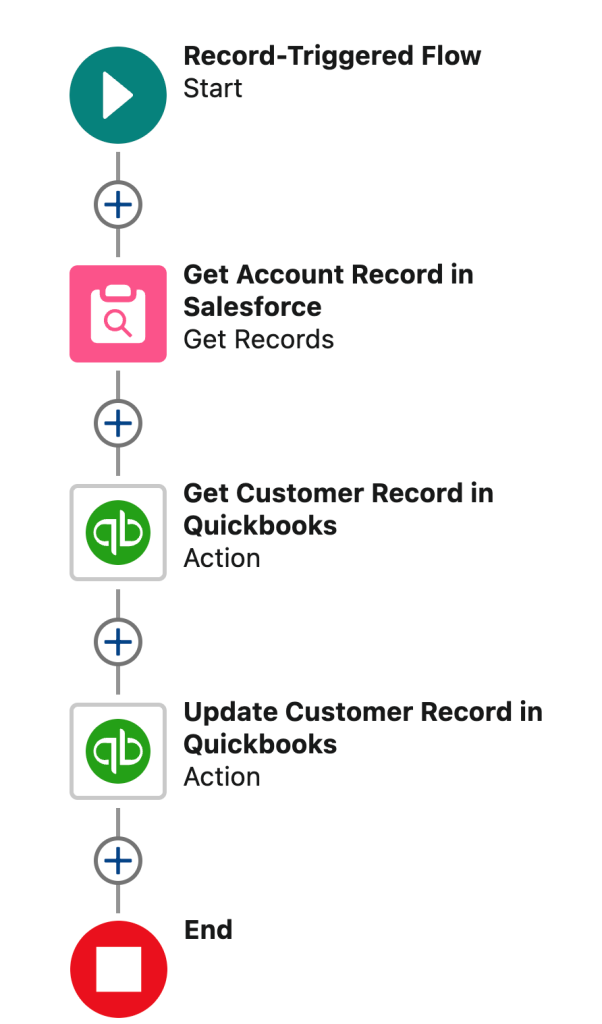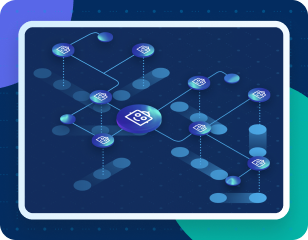Juggling systems is an all too common challenge for small businesses. You manage deals in Salesforce. You track inventory in NetSuite. Slack is your go-to for internal communication, while spreadsheets fill in the gaps to make things work.
This disconnected reality is the norm for most organizations. Fast growth often results in disconnected tools, borne out of necessity.
The result? Duplicated efforts to the tune of 1.5 hours daily in wasted labor, delayed decisions, and an incomplete picture of your business at a time when seeing the full picture is critical to continued growth.
Consider this: What’s the impact for your sales team if they can’t see inventory? How can you accurately forecast if the data you need to do so is split across multiple siloed systems? Growth stalls not because demand isn’t there, but because the bottleneck created by disconnected systems becomes harder and harder to navigate as your company scales.
MuleSoft for Flow: Integration removes this bottleneck by putting powerful integration capabilities in the hands of business teams with less dependency on a development team or IT resources. These integrations also lay the foundation for something bigger: AI agents that work across your business. These agents have moved beyond the old paradigm of chatbots and are now individual experts across a range of topics, helping to keep your business running as efficiently as possible.
How MuleSoft for Flow: Integration powers integration for small businesses
MuleSoft for Flow makes integration possible all within the familiar interface of Salesforce Flow Builder. Your Salesforce admins are already at home here, as this is the same environment that is used to create Flows for automations within Salesforce. It’s designed to be intuitive enough for any Salesforce user to learn and become proficient with.
We’ll go over two real-world examples showing how intuitive and effective it can be to integrate your systems using MuleSoft for Flow: Integration. These examples highlight the ease of setup and showcase the practical benefits.
Salesforce to QuickBooks Online
In this example, a Salesforce Flow is triggered by updates to an Account record. After the record has been updated, the flow automatically pushes these changes into the corresponding Customers record in QuickBooks, ensuring that the customer information is up to date and consistent across both systems. In this case, when a new billing address is updated in Salesforce, the same change is pushed out to QuickBooks.
Instead of relying on manual re-entry, the two systems stay in sync automatically. This means less room for error, less back-and-forth between teams, reduced need for extra software licenses, and more accurate financial reporting.

Netsuite to Salesforce
Inventory data is often siloed in ERP systems like NetSuite, out of reach or inconvenient for sales reps working in Salesforce to access.
You can leverage MuleSoft for Flow: Integration to make key insights from your Netsuite Instance, like inventory status, visible right in Salesforce within a Quote or Opportunity record. Your sales team can make informed decisions and quote with confidence, knowing what’s in stock and when it can ship.
This flow illustrates the simple logic required to bring this flow to life by leveraging the On Updated Record trigger. In this Flow, the trigger is configured to push updates to Salesforce when an Inventory record in Netsuite is updated.
Note the other available functions of the NetSuite connector, allowing you to quickly set up additional functionality between Salesforce and NetSuite using the same techniques showcased in this flow.

Low-code integration: Once cutting-edge, now the engine of SMB growth
In 2021, Gartner predicted that “by 2025, 70% of new applications developed by organizations will use low-code or no-code technologies.” Low-code integration is how modern businesses scale. For years, MuleSoft has led the charge with tools like MuleSoft Composer, enabling non-developers to create effective integrations quickly and securely.
Why has it been so powerful for SMBs? Consider cost and efficiency advantages:
- No development team required
- Rapid implementation timelines
- Prebuilt connectors
- Minimal technical expertise needed to maintain
That’s where MuleSoft for Flow: Integration comes in. Building on everything MuleSoft has learned from Composer and Salesforce’s mature Flow platform, MuleSoft for Flow: Integration brings simple integration directly into the Salesforce environment that millions of users already know and trust.
If you can build a Salesforce Flow, you already have the skills needed to craft cross-platform integrations with the prebuilt connectors available in Mulesoft for Flow: Integration – dramatically accelerating time-to-value.
An integrated business is an AI-ready business
Connecting your systems today does more than solve operational headaches or bottlenecks. Crucially, it also lays the groundwork for the future of business operations: AI agents.
An AI agent laser-focused on customer service. For example, they can provide 24/7 support to customers while leveraging natural language processing to hold a conversation. On top of being leaps and bounds more capable in conversation than a simple chatbot, agents can even take autonomous actions like processing a refund or return of product.
As businesses begin leveraging Agentforce agents to power internal and external workflows, they set a new standard of service for their customers, and unlock massive productivity gains for their internal teams.
The advent of agents is a true paradigm shift, and marks a golden opportunity for SMBs to do less with more, all while being more efficient and providing better support for their customers and internal teams than ever before.
Going a step further, once your systems are integrated with Salesforce, Agentforce can leverage those same integrations to autonomously take action where needed, both inside and outside of Salesforce. So once you’ve solved your integration needs with MuleSoft for Flow: Integration, you’re now also prepared for a future where specialized AI agents are active participants in your business’ growth.
MuleSoft for Flow: Integration is capable, dynamic, and ready for an agentic future
Thanks to MuleSoft for Flow: Integration, scalable and simple integration is no longer just ideal for large enterprises. The ability to quickly and easily connect critical systems without the need for a dedicated IT team is now within reach for SMBs.
By integrating key systems, businesses are doing more than just improving today’s workflows. They’re laying the groundwork for a future where AI agents move seamlessly across their business, take action, drive efficiency, and accelerate growth.
Wondering if MuleSoft for Flow: Integration can integrate with the systems used by your business? Check out our ever-growing list of system connectors. And if you’re ready to dive deeper into the critical role integration plays in setting up the agentic future, make sure to reach out to us to continue the conversation!









